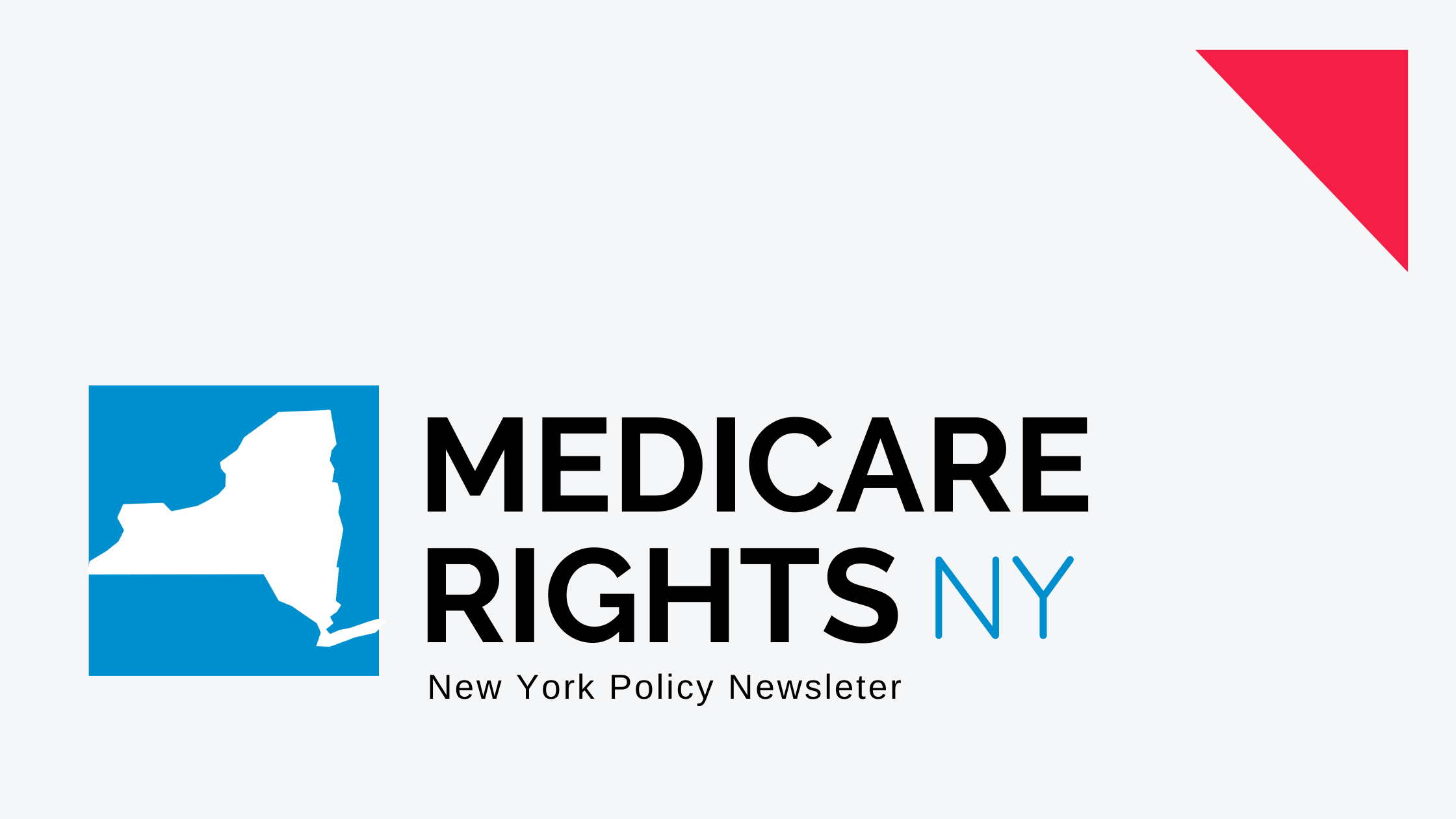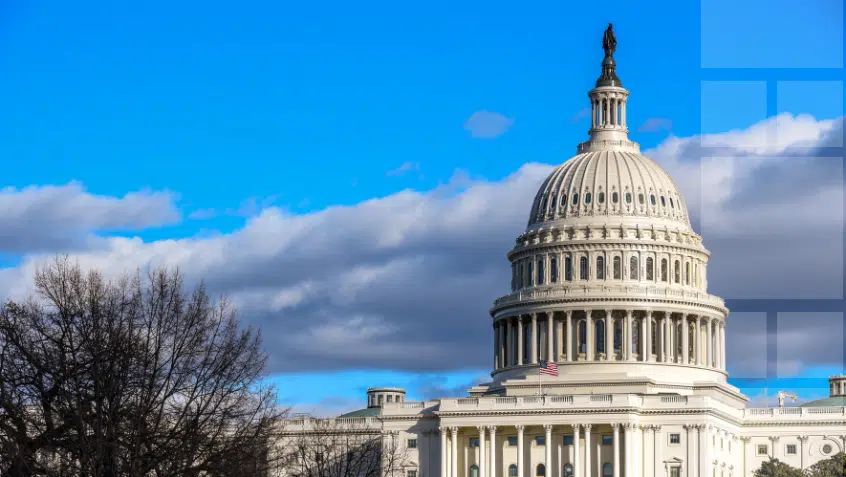Join Us Live for a Discussion on Medicare, Democracy, and the Future of Health Care

Medicare Rights Advocacy
Governor Cuomo releases New York State budget
Governor Cuomo recently released the 2021 NYS Executive Budget. The Medicare Rights Center is pleased to report that the Managed Care Consumer Assistance Program (MCCAP) and the Community Health Advocates (CHA) program received level funding. Medicare Rights also applauds Governor Cuomo for the funding included for the Community Health Access to Mental Health and Addiction Services Project (CHAMP). However, certain proposals within the budget raise concerns.
Specifically, Medicare Rights is concerned about the level of meaningful consumer and community input in the Medicaid Redesign Team (MRT) process. As Governor Cuomo is calling for a reconvening of the MRT, Medicare Rights asks that community-based organizations be invited to sit on and work with this second iteration, called MRT II. It is vital to include a variety of perspectives, especially those of Medicaid recipients and their advocates, in order to ensure the MRT II meets the Governor’s goal of reducing Medicaid spending and improving outcomes while controlling costs without hurting those using the Medicaid program.
See Medicare Rights’ budget testimony here.
Medicare Advocacy Toolkits provide guidance for New York advocates helping beneficiaries navigate complex Medicare topics
Medicare Rights has released two new toolkits, which were developed for any New York advocate helping older adults and people with disabilities navigate Medicare. While these toolkits are intended for a New York audience, they may offer lessons to other states and be useful resources as advocates and policymakers think about ways to improve the federal Medicare program.
Medicare Advocacy Toolkits will roll out in 2020, with covered topics including:
- Medicare enrollment
- Durable medical equipment (DME) access
- Medicare for individuals with End-Stage Renal Disease (ESRD)
- Part D drug access
To view the toolkits, visit Medicare Interactive. Support for this work was provided by the New York State Health Foundation (NYSHealth).
Resource provides information on key Medicare changes
Medicare Rights and the National Council on Aging (NCOA) have released a new resource related to several important 2020 Medicare changes. The resource is a detailed primer covering numerous changes, including information on the expansion of the telehealth benefit, the closure of the donut hole, and indication-based formularies.
To view this resource, visit NCOA’s website. For more information about 2020 Medicare changes, including changes to Original Medicare costs, visit Medicare Interactive.
Toolkit provides information about Medicare coverage options for dually eligible beneficiaries in New York
Medicare Rights has updated a resource on the various coverage options available for New York beneficiaries eligible for both Medicare and Medicaid (dual-eligibles). Updates include a new resource on integrated appeals for Medicaid Advantage Plus (MAP) enrollees and an FAQ on coverage options for dually eligible New Yorkers.
This toolkit will roll out in 2020, with covered topics including:
- Dual-eligible Special Needs Plans (D-SNPs) and Medicaid Advantage
- Options for beneficiaries who need long-term care, such as MAP and the Program of All-Inclusive Care for the Elderly (PACE)
- Decision-making for special populations
To view the toolkit, visit Medicare Interactive. Planning and development of this toolkit are made possible with support from the Altman Foundation, the Fan Fox and Leslie R. Samuels Foundation, and the van Ameringen Foundation.
New York State and Federal Government Updates
Medicare indication-based formularies
In 2018, the Centers for Medicare & Medicaid Services (CMS) gave Medicare Part D plans the option to create indication-based formularies, beginning in 2020. This means that Part D plans can choose to cover a drug only for certain uses, rather than for all of the Food and Drug Administration (FDA)-approved uses.
If plans choose to tailor drug coverage to specific indications, they are required to ensure that there is another similar drug on formulary for the non-covered indication. Plans are also required to update beneficiary materials so that the limitations are clear to prospective enrollees. These changes must be detailed in the plan’s Annual Notice of Change (ANOC) and Evidence of Coverage (EOC). The Medicare Plan Finder should also reflect when indication-based management of a drug is applied.
If a beneficiary needs a drug for an indication the plan does not cover, the beneficiary can request a formulary exception. If the plan denies the formulary exception, the beneficiary can appeal that decision as they would any other unfavorable exception request.
Medicare coverage of opioid treatment programs
Starting January 1, 2020, Medicare Part B covers opioid use disorder (OUD) treatment received at opioid treatment programs (OTPs). OTPs, which are also known as methadone clinics, are certified by the Substance Abuse and Mental Health Services Administrations (SAMHSA) to provide methadone as part of medication-assisted treatment (MAT).
OTPs are the only places where an individual can receive methadone to treat opioid use disorder (methadone prescribed for pain relief does not have to be provided by an OTP). Before 2020, Medicare did not cover OTPs, which meant that beneficiaries could not get Medicare coverage for any care they received at an OTP, including methadone treatment.
As of February 18, 2020, there are no Medicare-approved OTPs in New York. Individuals eligible for both Medicare and Medicaid should continue using their Medicaid coverage to access these services.
For a list of Medicare-approved OTPs, please visit CMS’s website. For more information on Medicare OTP coverage, please visit Medicare Rights’ blog.
Case Example
Accessing Medicare-covered OTP services
Once an OTP is enrolled in Medicare, it can bill Medicare for the services provided to Medicare beneficiaries. Therefore, beneficiaries who want to get Medicare-covered OTP services should contact the OTP to make sure it accepts Medicare. If the OTP is not enrolled in Medicare, the beneficiary (or other insurance, if applicable) is responsible for the cost of the care.
If a beneficiary has both Medicare and Medicaid and was previously receiving Medicaid-covered OTP services, Medicaid should continue to pay primary for treatment until the OTP is enrolled in Medicare. At this time, once they meet their deductible, a beneficiary will not owe any cost-sharing (coinsurance or copayment) for OTP services.
Register for Medicare Rights NY
Medicare Rights NY is a regular email newsletter with updates on health policy and advocacy developments in New York State and their impact on older adults and people with disabilities. Stay up-to-date on key policy developments that affect older New Yorkers and those with disabilities.
Show Comments
We welcome thoughtful, respectful discussion on our website. To maintain a safe and constructive environment, comments that include profanity or violent, threatening language will be hidden. We may ban commentors who repeatedly cross these guidelines.
Help Us Protect & Strengthen Medicare
Donate today and make a lasting impact
More than 67 million people rely on Medicare—but many still face barriers to the care they need. With your support, we provide free, unbiased help to people navigating Medicare and work across the country with federal and state advocates to protect Medicare’s future and address the needs of those it serves.
The Latest
Most Read
Add Medicare to Your Inbox
Sign up to receive Medicare news, policy developments, and other useful updates from the Medicare Rights.
View this profile on InstagramMedicare Rights Center (@medicarerights) • Instagram photos and videos









